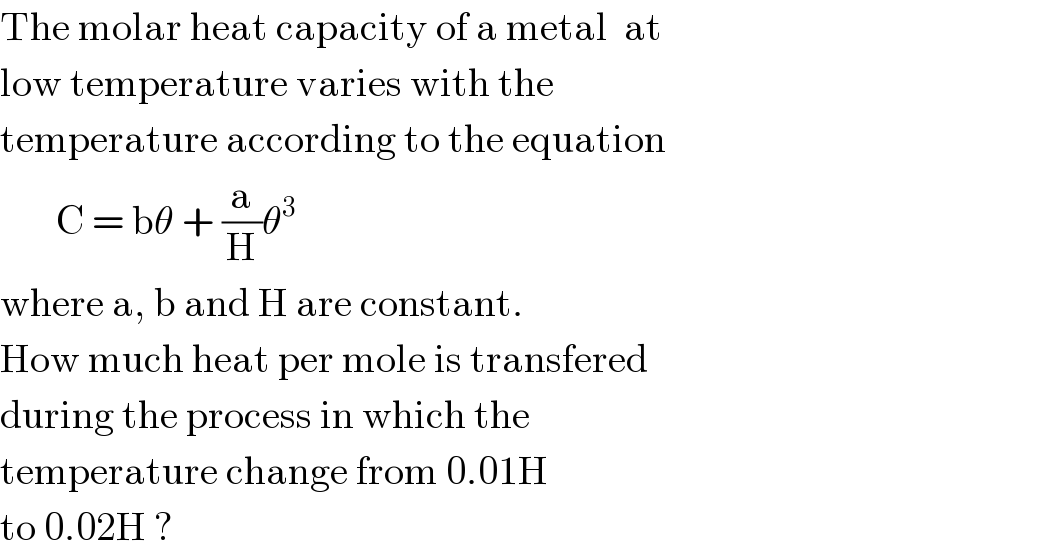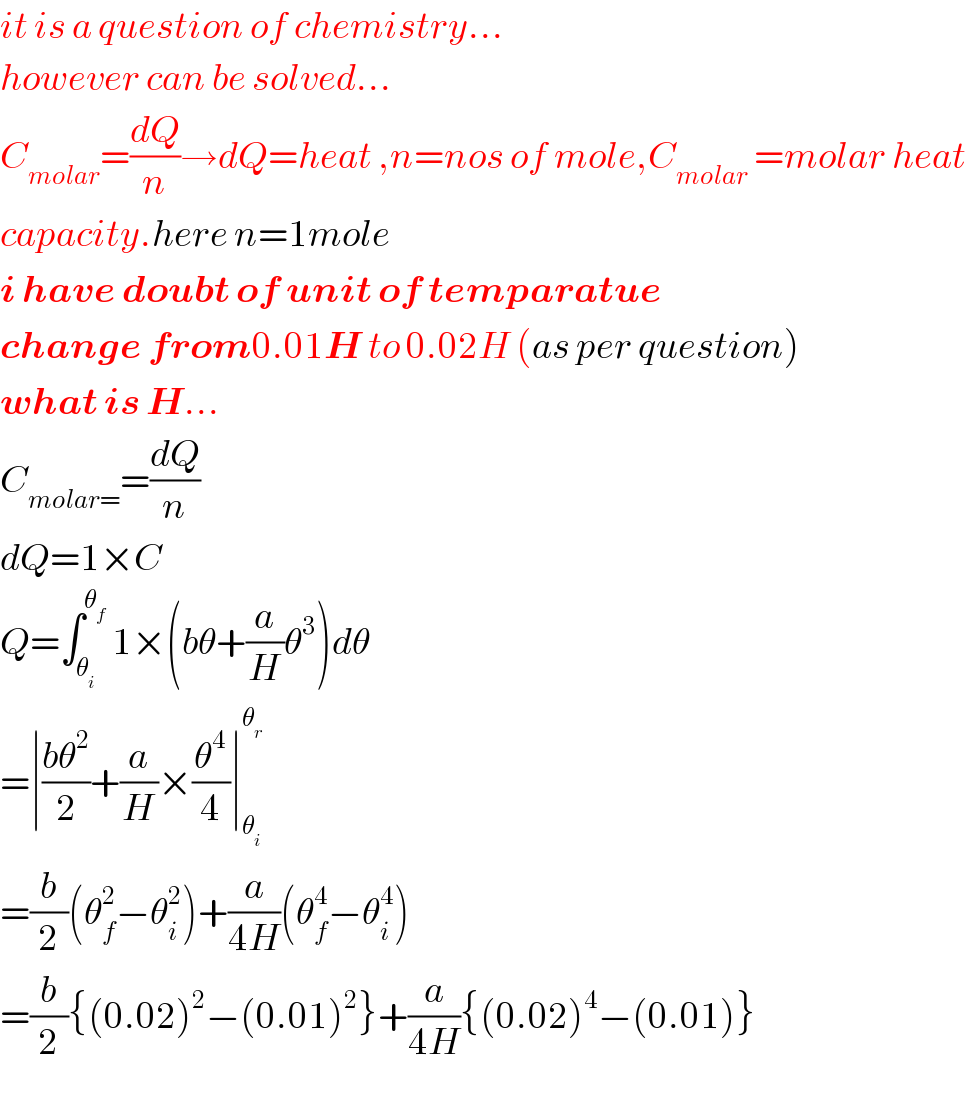
Question and Answers Forum
Previous in Heat and Theromdynamics Next in Heat and Theromdynamics
Question Number 58216 by Umar last updated on 20/Apr/19

Commented by Umar last updated on 20/Apr/19

Answered by tanmay last updated on 20/Apr/19

Commented by Umar last updated on 20/Apr/19

Commented by tanmay last updated on 20/Apr/19

